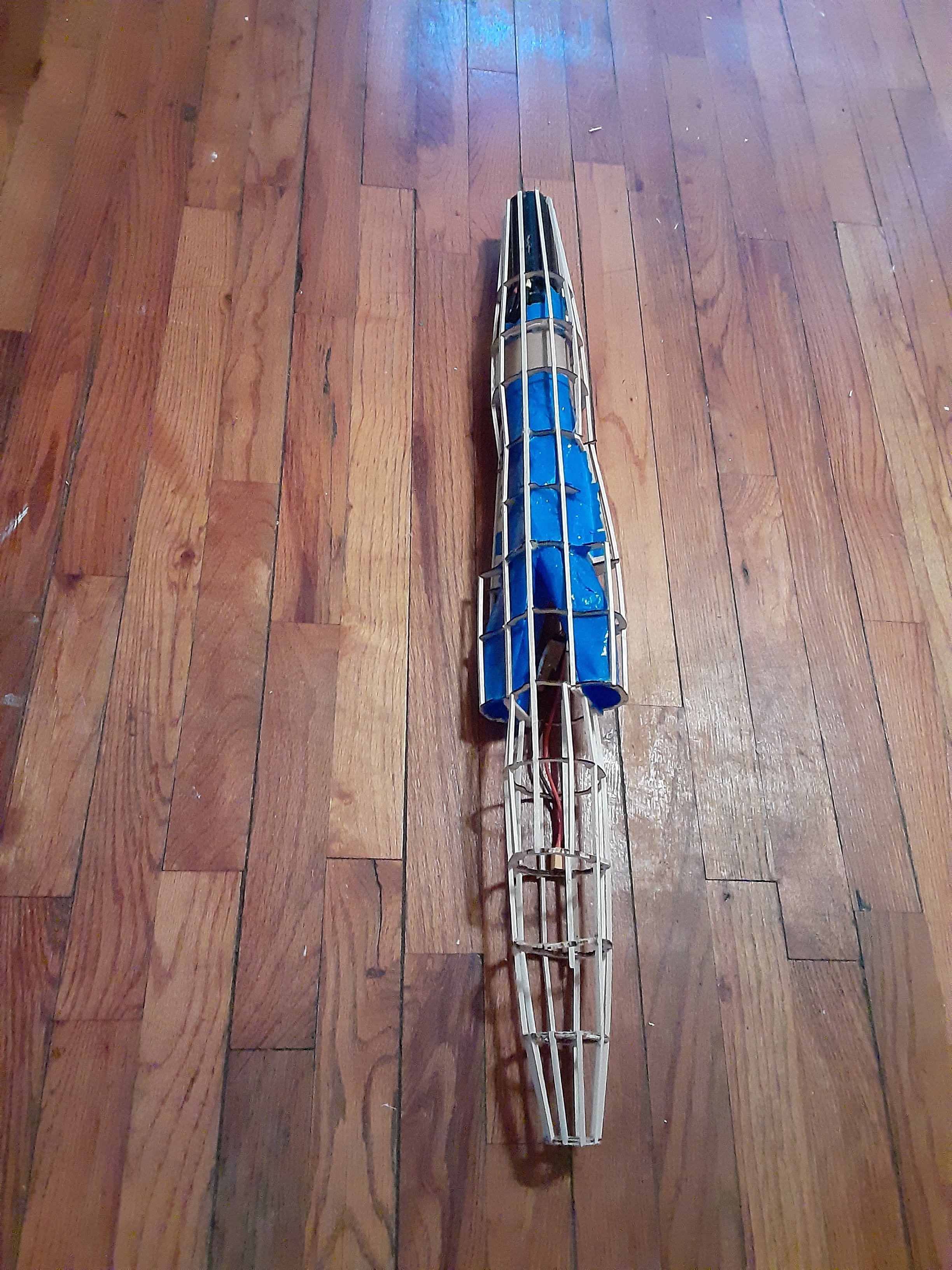telnar1236
Elite member
A few days ago I decided I wanted to build an F-104 EDF. Because I don't have too much space to fly, it needed to be as light as absolutely possible, which meant balsa and plywood construction. At this point I've designed everything in CAD and laser-cut and assembled the fuselage. The fuselage formers and some internal decks are cut from plywood while the stringers and airfoil formers are balsa. The internal duct is made out of resin impregnated painters tape.
Some specs (I used metric because it's easier to do the math with):
1.1 m length, 47 cm wingspan (not quite scale, but it will help the plane slow down and you won't notice the difference)
Hyperflow 56 mm fan w/ 8.6 N (880 g) thrust, 40 A ESC
Airfoil will be Clark Y for wings, NACA 16009 for the vertical stab, flat plate for the horizontal stab
On paper top-speed in SLF is about 38 m/s (85 mph) which is about what I'm aiming for
On paper stall-speed is about 10.5 m/s (23.5 mph) which is a bit fast, but not too bad for an F-104.




Some specs (I used metric because it's easier to do the math with):
1.1 m length, 47 cm wingspan (not quite scale, but it will help the plane slow down and you won't notice the difference)
Hyperflow 56 mm fan w/ 8.6 N (880 g) thrust, 40 A ESC
Airfoil will be Clark Y for wings, NACA 16009 for the vertical stab, flat plate for the horizontal stab
On paper top-speed in SLF is about 38 m/s (85 mph) which is about what I'm aiming for
On paper stall-speed is about 10.5 m/s (23.5 mph) which is a bit fast, but not too bad for an F-104.













